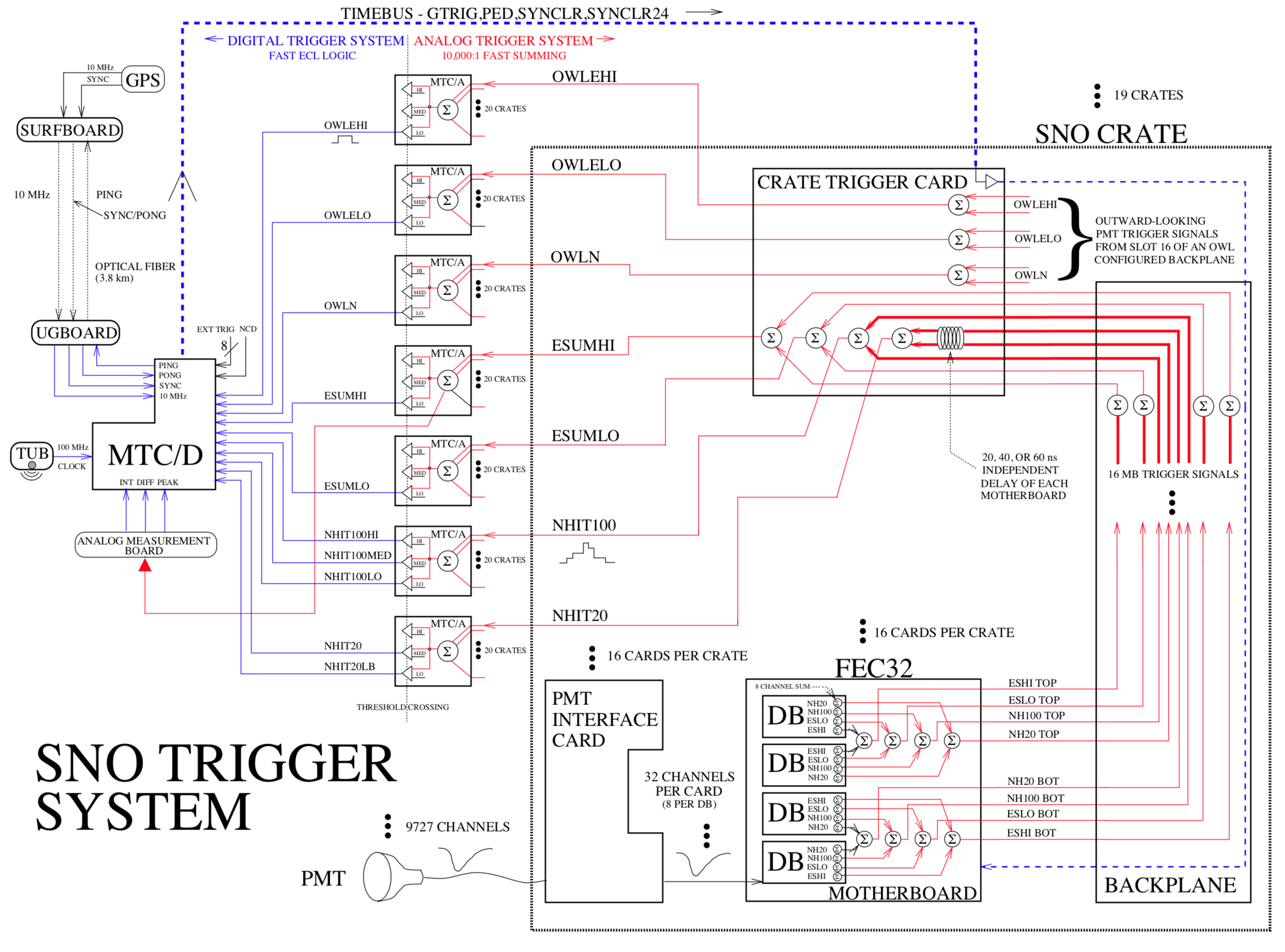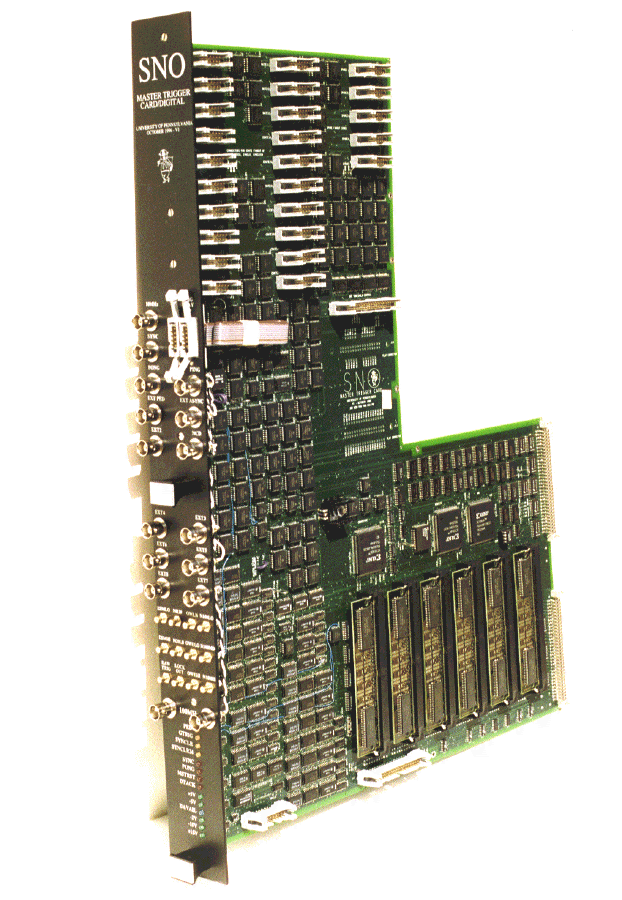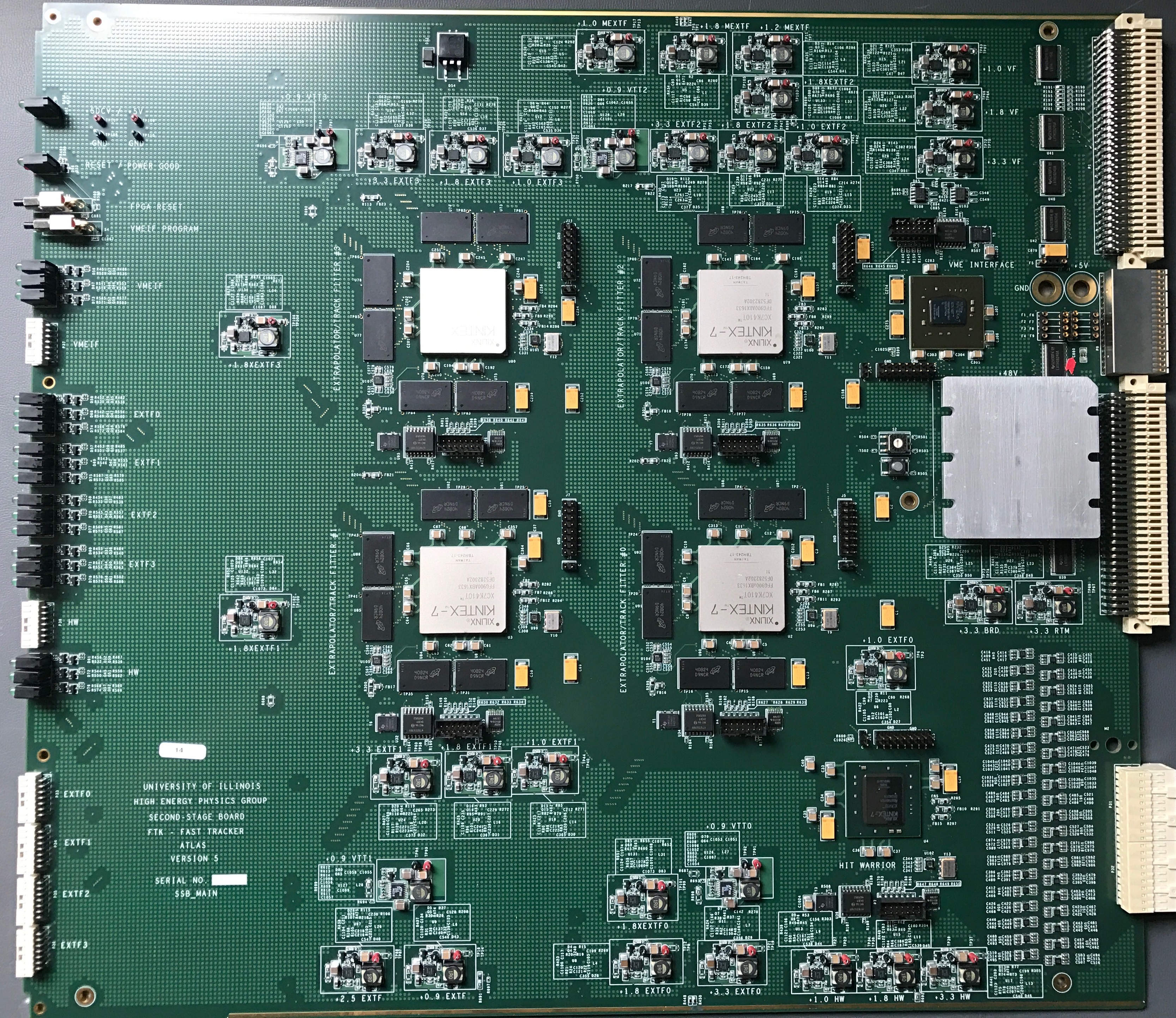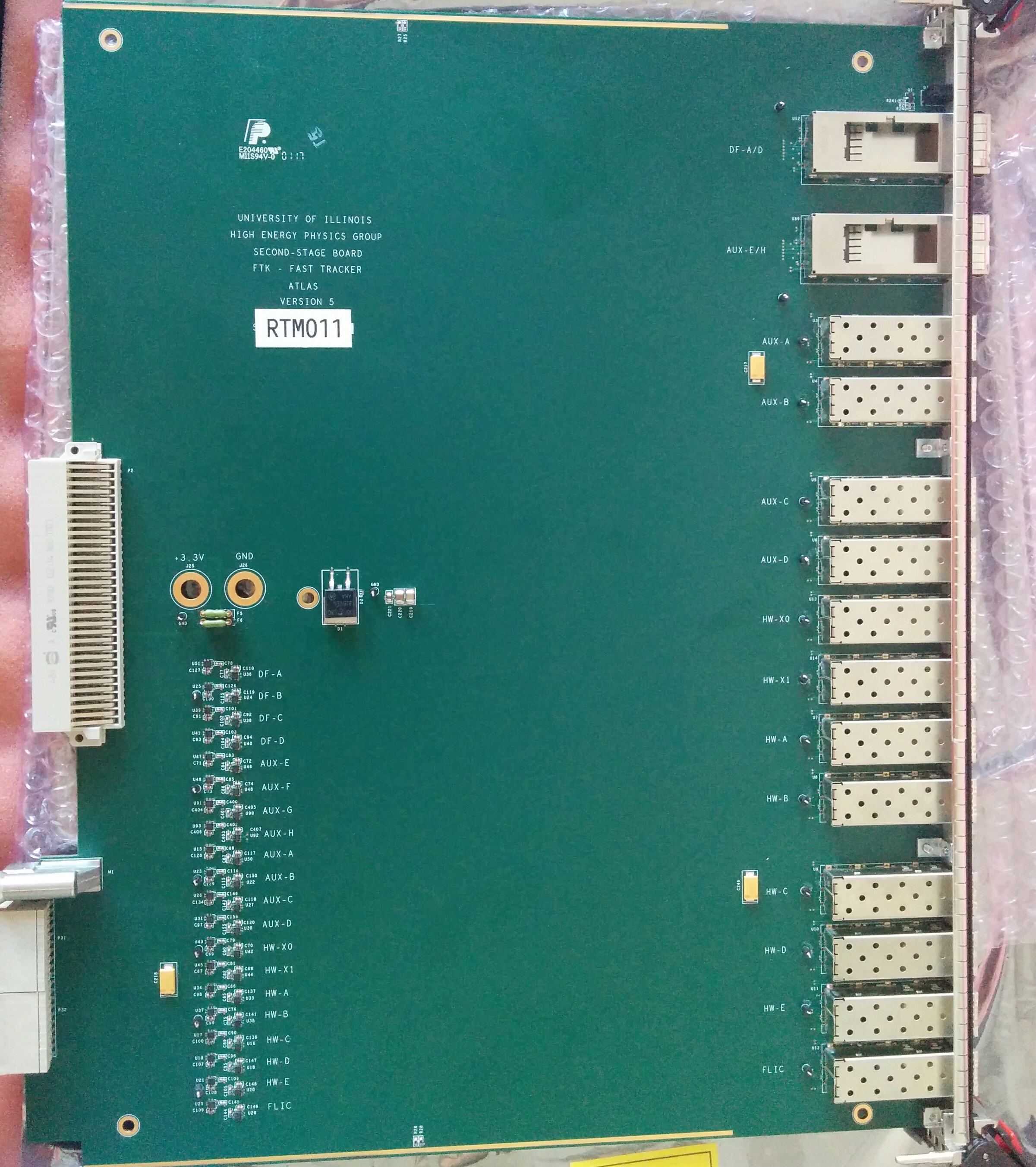Trigger Electronics
Fast Electronics for Triggering in Particle Physics
Trigger Electronics for the SNO Experiment
The SNO trigger electronics was analog on the front-end (summed PMT pulses) and digital on the backend, as shown below.

As I graduate student on SNO and under the guidance of the legendary Penn HEP Instrumentation Group, I developed 5 different electronics boards for the SNO trigger system. These included the GPS fiber interface boards, analog measurement board, trigger utility board and the Master Trigger (aka “Brain”) board shown below:

To my knowledge, this is the first and last 12U VME board that fits into a 9U VME crate.
Fast Tracking Electronics
Selecting interesting physics events with high efficiency while suppressing backgrounds from high-rate QCD processes is a challenging but important problem. Performing high-quality track reconstruction over the full detector at the beginning of the HLT is key to addressing this problem. The computational load on HLT increases as the luminosity and pile-up increase, requiring more sophisticated algorithms for background suppression.
Fast Tracker (FTK). Our group at Illinois developed electronics for a new system called FastTracKer (FTK) to rapidly determine charged particle trajectories using fast pattern recognition for use in the ATLAS trigger system starting in 2018 IEEE 59 (2012) 348. The FTK system consists of custom and commercial electronics using pre-computed hit patterns based on the ATLAS tracking detector layout to perform global reconstruction of tracks with pT > 1 GeV, at the full 100 kHz Level-1 trigger rate, with similar resolution as in offline tracking. We are responsible for the design and construction two different types of boards for FTK (the larger of the two is a complex 18-layer PCB with six Xilinx Kintex-7 FPGAs shown below along with the Rear Transition Module) and associated firmware that handles the final-stage tracks and hits processing.


Phase-II Hardware Track Trigger. We are also in the early stage of developing the processing firmware for a much larger system suitable for data taking during the high-luminosity LHC era. In order to accommodate the higher luminosity running without significantly increasing trigger thresholds with respect to the Run-I values, major upgrades to the trigger and DAQ systems are required.
Further Reading
- G. Aad, et al., “The FastTracker Real Time Processor and Its Impact on Muon Isolation, Tau and b-Jet Online Selections at ATLAS”, IEEE Trans. Nucl. Sci. 59, 348 (2012)
- G. Aad, et al., “Performance of the ATLAS Trigger System in 2010”, Eur. Phys. J. C72, 1849 (2012)
- G. Aad, et al., “Expected Performance of the ATLAS Experiment – Detector, Trigger, and Physics”, arXiv:0901.0512 (2009)
- J. Boger et al.,”The Sudbury Neutrino Observatory,” Nuclear Instruments and Methods, A449, 172 (2000)